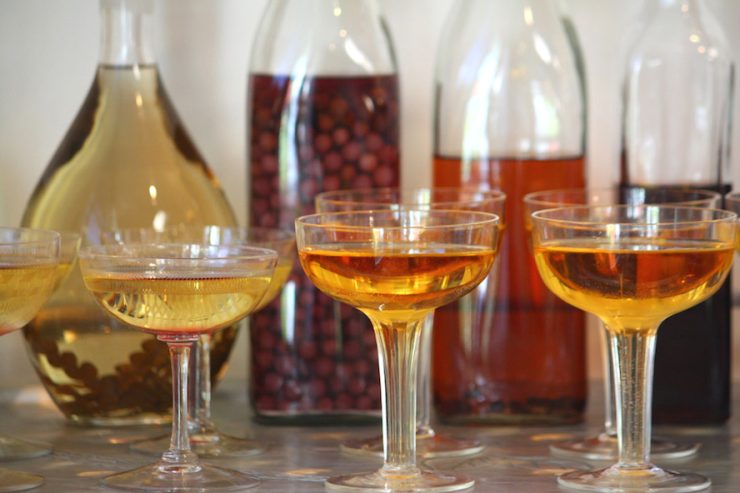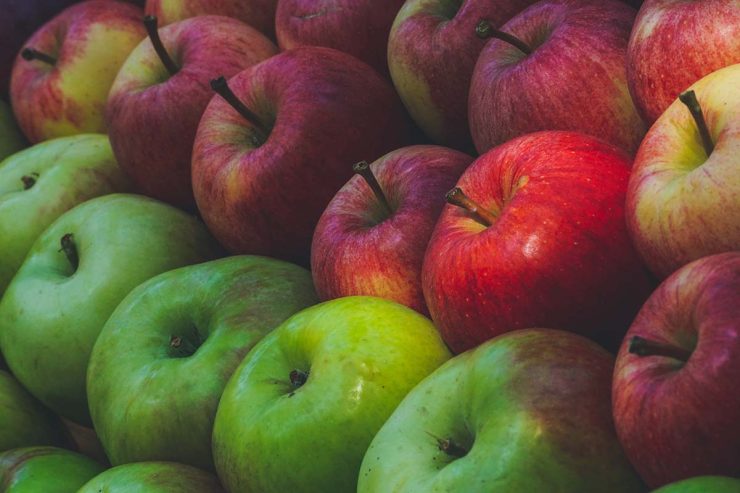In foraging terms, May is super-charged. Plants are falling over one another to pop out of the ground. Some of the best-tasting wild edible plants can be spotted all over the city within the next four weeks.
In our current issue, Marie Viljoen, mistress of edible weeds, waxes eloquent about the flowering stems of the burdock plant. “Those who eat burdock typically cook only the root. But the fast-growing stems are a delicious wild food. Cooked, they are a semantic and gustatory marriage of globe and Jerusalem artichokes,” she writes.
A booze bath turns last summer’s fruit haul into a warm winter infusion.
Captured in cordials, souvenirs of summer can warm chilly nights.
Deprivation. That is what eating seasonally means. It means that in high summer you do not eat an apple. You walk right on by that crackling green Granny Smith that lurks year round in the grocery store bins. Because it didn’t come from around here. It means that in January you do not buy those stackable plastic boxes of raspberries (sometimes I cheat; I do), and it means that tomatoes are not the pink slices in silly salads or the vine-grown California ones in February, but the ripe, fat, sweet and bursting Brandywines of August.
Cool weather belongs to leafy greens and to Brassicas, vegetables with a bite.
Out on the Rockaways artist Frank Meuschke’s beach farm is pumping out tomatoes — at least until Irene pays a visit. We ate his Brandywines and Black Russians warm from the vine with burrata and torn up basil. Frank and his wife Betsy Alwin turn the crop that they can’t eat into sauce as fast as they can.
Pigweed is a sprawling invader of cultivated lands and gardens and has probably made a…













